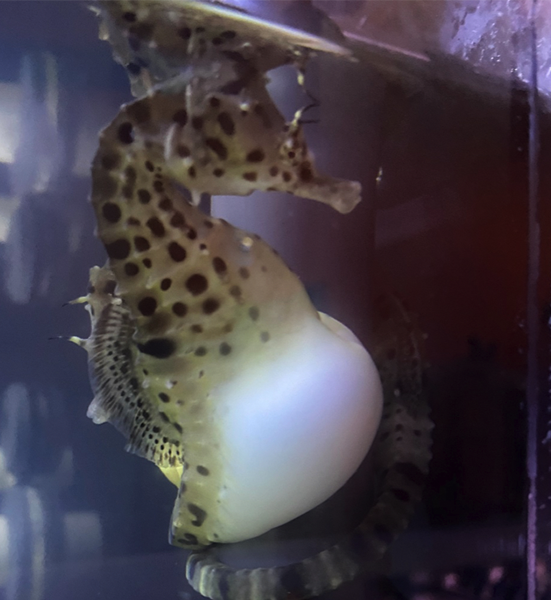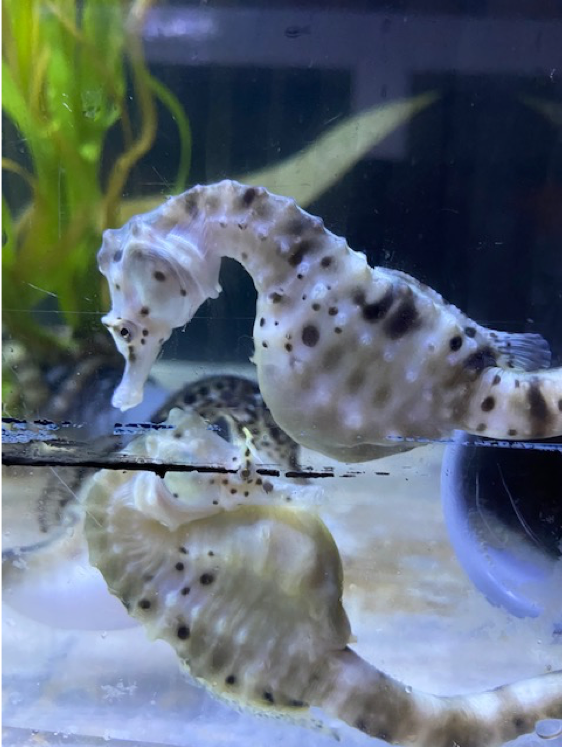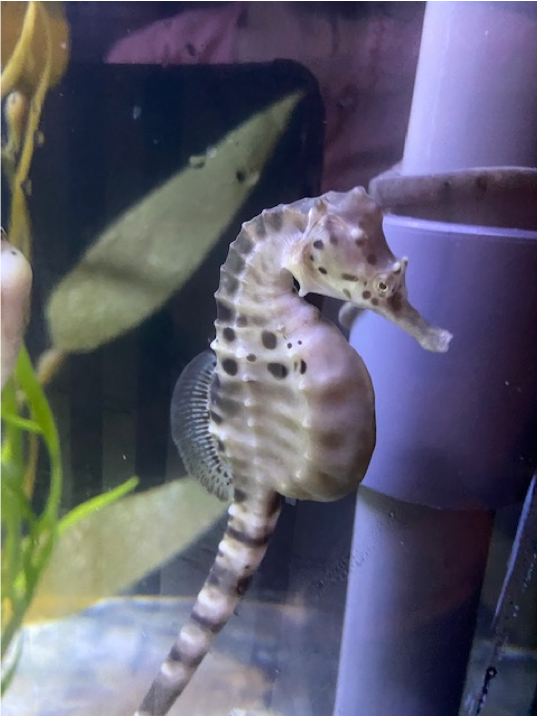Attention, attention! Ripley’s Aquarium of Canada now has a herd of pot-bellied seahorses!
Our new additions arrived while the Aquarium was closed to the public and have spent the last month getting acclimated to their new environment. In this Deep Sea Diary, let’s take a closer look at these fish.
Yes, I said fish.
Seahorses, despite their unique features and appearance, are indeed fish. Like other bony fish, seahorses rely on gills to breathe and possess a swim bladder for buoyancy regulation. Belonging to the Syngnathid family, they are close relatives of pipefish and seadragons—both you can find here, at Ripley’s Aquarium.
As you may have guessed, pot-bellied seahorses are easily distinguished by their large swollen belly. Pot-bellied seahorses are the largest of all seahorses, growing up to 35 centimetres in length and can be found throughout the southwest Pacific Ocean.


Seahorses in general, are notoriously poor swimmers. Relying on a small dorsal fin for the majority of their propulsion, seahorses are one of the slowest fish in the world and opt for a more sedentary lifestyle. In fact, during storms and rough seas, they have been known to perish from sheer exhaustion. Seahorses have an arsenal of defense mechanisms to compensate for their lack of mobility. Projections on their body allow them to mimic aquatic vegetation, the ability to change colour makes them camouflage experts and their prehensile tail allows them to latch onto coral, kelp and seagrass for cover.
Despite their immobility, seahorses are voracious predators. They prefer an ambush style to hunt prey, which is mainly planktonic organisms like copepods and krill. Seahorses have excellent eyesight and, just like chameleons, can move their eyes independently, allowing them to effectively track their prey. Food passes through their body very quickly as they lack a stomach, as a result they must eat frequently (up to 50 times a day!) for survival. Seahorses also have no teeth, and instead rely on suction to slurp prey through their snout whole.
It would be remiss to not mention the fact that male seahorses incubate developing eggs.
Seahorses form monogamous pairs, often ‘dancing’ together daily to reaffirm their bond. During the mating ritual, females transfer their eggs to a special pouch on the males’ abdomen where they are fertilized. In less than a month, hundreds of baby seahorses are born. We are hoping that our new pot-bellied seahorses will reproduce in the future and our herd will continue to grow.
Many species of seahorse are at some level of risk under the IUCN (International Union for Conservation of Nature). Habitat destruction, chemical pollution and an increase in severe weather due to climate change are some of the main threats to seahorse populations worldwide.
